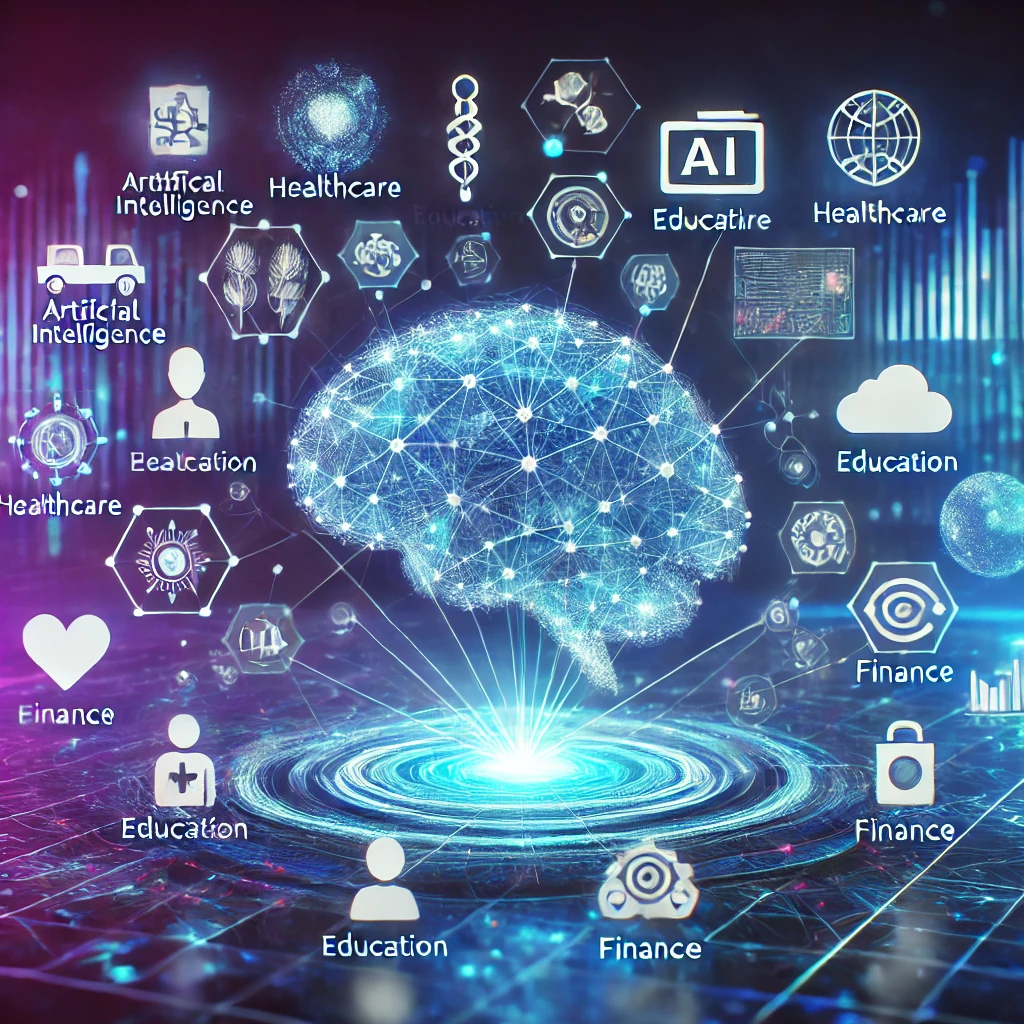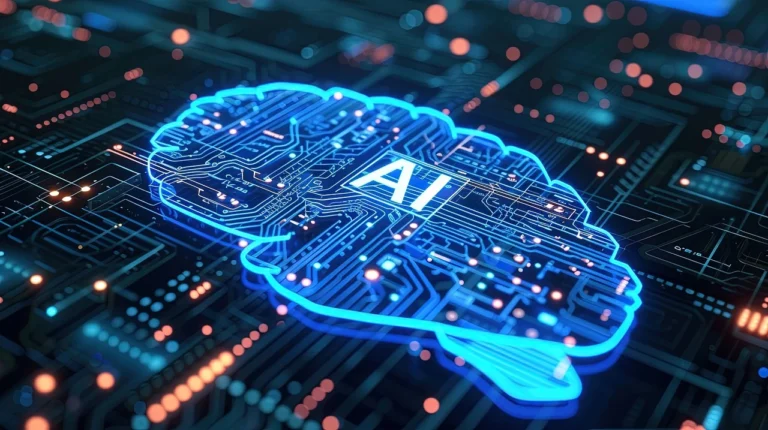Foundation Models: Unlocking the Future of AI Innovation in 2025
What are Foundation Models?
Foundation models represent a significant advancement in the field of artificial intelligence, characterized primarily by their size, versatility, and ability to perform a wide range of tasks. Unlike traditional models that are often designed for specific tasks and trained on relatively narrow datasets, foundation models are designed to be robust and adaptable, enabling them to function across various domains. This versatility stems from their training on diverse datasets that encompass a multitude of information types, allowing them to generalize better to unseen tasks and data.

One of the most prominent features of foundation models is their sheer scale. These models often include billions of parameters, which allows them to capture intricate patterns and relationships within the data they process. This immense size is what enables foundation models to perform complex tasks such as natural language processing, where they can generate human-like text, comprehend context, and even translate languages. In the realm of computer vision, foundation models can analyze images, recognize objects, and even produce creative content, such as generating art or designing new products.
Moreover, their architecture often relies on deep learning techniques, such as transformer networks, which facilitate effective learning from large datasets. This allows foundation models to be fine-tuned for specific applications after their initial pre-training phase. As a result, they are not only efficient but also cost-effective, as they can be leveraged for various applications without the need to build and train new specialized models from scratch.
In essence, foundation models are transforming the landscape of artificial intelligence by providing a flexible and powerful tool that can adapt to a variety of challenges in fields ranging from machine learning to data analysis. Their capacity for handling multiple tasks makes them a cornerstone of modern AI development.
The Evolution of AI Models
The journey of artificial intelligence (AI) models commenced in the mid-20th century, primarily focusing on rule-based systems and symbolic reasoning. Early AI approaches were grounded in logical inference, where predefined rules dictated system behavior. While these models exhibited promise, they were inherently limited by their inability to generalize across diverse scenarios or learn from new data, significantly restricting their applicability in real-world environments.
As the field progressed, the advent of statistical methods brought significant improvements. This transition marked the emergence of machine learning (ML), where algorithms began to learn from data rather than relying solely on hard-coded rules. Early neural networks showcased the potential for pattern recognition, yet they suffered from limitations such as insufficient data and computational power, hindering their scalability and effectiveness.
With the exponential growth of data and substantial advancements in computing capabilities, particularly through the rise of graphics processing units (GPUs), AI models entered a transformative phase. The introduction of deep learning, a subset of machine learning that utilizes multi-layered neural networks, revolutionized AI applications. This innovation enabled models to process vast amounts of unstructured data, which ultimately led to breakthroughs in computer vision, natural language processing, and speech recognition.
Subsequently, foundation models emerged as a byproduct of these advancements, characterized by their scale and versatility. These models demonstrate an unparalleled ability to transfer knowledge across various tasks and domains, greatly outpacing their predecessors in performance and adaptability. As researchers continue to explore the potential of foundation models, it illustrates a new paradigm in AI, where the integration of vast datasets and complex algorithms lays the groundwork for future innovations. The journey of AI models, from early rule-based systems to sophisticated foundation models, exemplifies the dynamic evolution of technology in understanding and replicating human-like intelligence.
How Foundation Models Work
Foundation models represent a significant advancement in artificial intelligence, relying primarily on deep learning architectures, especially transformers. The transformer architecture is essential for these models, enabling them to process and generate language with exceptional proficiency. This structure employs multi-head attention mechanisms, which allow the model to focus on different parts of the input data simultaneously, thereby enhancing its understanding and contextual awareness of language patterns. The self-attention mechanism is pivotal, as it gives the model the ability to weigh the importance of various words in relation to each other, enabling it to capture long-range dependencies effectively.
The training process of foundation models is equally critical to their functionality. Typically, these models undergo unsupervised learning, wherein they are trained on vast datasets harvested from diverse sources. This approach enables the models to learn language representations without the need for explicit labels. By processing large quantities of text data, foundation models develop an understanding of context, grammar, facts, and even some reasoning capabilities. After initial training, fine-tuning is often performed, where the model is adapted to specific tasks or domains using smaller, labeled datasets. This step is crucial for enhancing the model’s performance in specialized applications, such as sentiment analysis or summarization, making it more versatile in real-world scenarios.
The output generation process is another area where foundation models excel. Once trained, they can produce coherent and contextually relevant text based on prompts given by users. The models utilize probabilistic reasoning to predict subsequent words or sentences, ensuring that the generated content aligns with the preceding context. The versatility of foundation models allows them to tackle various tasks, such as text generation, question answering, and translation, demonstrating their multifaceted nature. Overall, the combination of advanced architectures, rigorous training methodologies, and flexible output capabilities positions foundation models at the forefront of AI innovation.

Applications of Foundation Models
Foundation models have emerged as a transformative technology, particularly due to their ability to process and understand vast amounts of data. Their applications span various industries, including healthcare, finance, education, and entertainment. In healthcare, foundation models are utilized to enhance diagnostic processes through predictive analytics. By analyzing patient data and medical histories, these models can assist healthcare professionals in identifying potential health risks and recommending preventative measures, thereby improving patient outcomes.
In the finance sector, foundation models are instrumental in risk assessment and fraud detection. Financial institutions deploy these models to analyze transaction patterns and customer behavior, enabling them to swiftly identify suspicious activities. This not only enhances security but also optimizes the decision-making processes surrounding loan approvals and credit assessments. The integration of foundation models instills greater confidence in the accuracy of financial predictions and planning.
The education sector has also benefited significantly from foundation models, particularly in personalized learning experiences. By analyzing individual student data, these models can tailor educational content to meet specific learner needs, thereby promoting engagement and improve performance. Additionally, they enable the development of intelligent tutoring systems that provide instant feedback and support, contributing to a more effective learning environment.
In the entertainment industry, foundation models are making waves through content generation. They can facilitate the creation of scripts, music, and even artworks by analyzing existing works and generating new, original content based on learned patterns. Moreover, these models are utilized in chatbots and virtual assistants, providing users with more accurate and human-like interactions, enhancing overall user experience.
Overall, the diverse applications of foundation models across these industries underscore their potential to significantly enhance efficiencies and innovate processes, demonstrating their pivotal role in shaping the future of AI.
Advantages of Using Foundation Models
Foundation models represent a significant advancement in artificial intelligence, offering a range of benefits that enhance the efficiency and effectiveness of AI applications. One of the primary advantages is their ability to streamline the training process for specific tasks. Traditional machine learning approaches often require extensive data and time to develop models tailored to particular problems. In contrast, foundation models leverage unsupervised learning on a vast amount of data, enabling them to generalize knowledge across various tasks, thus reducing the time and resources needed for training.
Moreover, foundation models demonstrate improved performance across various benchmarks. Their architecture allows for fine-tuning on specialized tasks, optimizing performance with less data than typically needed for task-specific models. This adaptability enables organizations to achieve notable results in fields like natural language processing, computer vision, and speech recognition. For instance, a single foundation model can achieve state-of-the-art results on multiple benchmarks without the need to create individual models for each task. This not only saves time but also alleviates the challenges associated with model deployment and maintenance.
Furthermore, foundation models excel in their ability to transfer learning. This characteristic facilitates the application of knowledge gained from one domain to another, effectively bridging gaps between different applications. For example, a model trained on a large corpus of text can be fine-tuned for specific language tasks, such as sentiment analysis or summarization, thereby accelerating the development cycle and enhancing the versatility of AI solutions. In sum, the advantages of foundation models, including efficiency in training, performance improvements across benchmarks, and learning transfer capabilities, position them as invaluable assets in the evolution of artificial intelligence.
Challenges and Limitations
Foundation models have emerged as pivotal elements in the advancement of artificial intelligence. However, their deployment is not without significant challenges and limitations. One prominent issue is the concern of data privacy. Foundation models are typically trained on vast datasets, which may inadvertently include sensitive information. The potential for misuse of such data raises serious ethical concerns about how these models could be applied in real-world scenarios, highlighting the necessity of robust data handling practices.
Additionally, the operational requirements for utilizing foundation models can be daunting. These models demand extensive computational resources, often necessitating specialized hardware and substantial energy consumption. Organizations looking to implement foundation models may face economic barriers regarding the costs associated with obtaining, maintaining, and operating the necessary infrastructure. This reliance on heavy computational power is a significant limitation for smaller entities, which may lack the resources to compete in this realm.
Moreover, the presence of biases in the training data poses a critical challenge. Despite efforts to curate representative datasets, many foundation models can inadvertently perpetuate or even amplify existing biases found in the data. Such biases can lead to skewed or unfair outcomes in applications, particularly those that impact decision-making in sensitive areas like hiring, law enforcement, and healthcare. Recognizing and mitigating these biases is essential to ensure that foundation models are deployed ethically and responsibly.
Finally, the ethical considerations surrounding the deployment of foundation models warrant attention. The potential for these models to automate decisions, generate content, and interact with users raises questions about accountability, transparency, and the implications of their use. Addressing these challenges necessitates collaboration between technical experts, ethicists, and policymakers to create frameworks that guide the sustainable deployment of foundation models in society.

Future Directions of Foundation Models
Future Directions of Foundation Models
The landscape of Artificial Intelligence (AI) is continuously evolving, and foundation models are at the forefront of this transformation. As researchers dive deeper into the capabilities of these models, several emerging trends and potential breakthroughs are anticipated. One significant direction is the enhancement of model efficiency and scalability. Researchers are exploring novel architectures that could reduce computational costs while maintaining performance. This approach not only seeks to democratize access to AI but also aims to mitigate the environmental impact associated with training large models.
Another focal area involves the integration of foundation models across diverse domains. Such models are increasingly being tailored for specific tasks, allowing for specialized applications in fields ranging from healthcare to finance. This adaptability is crucial as organizations look to implement AI solutions that meet unique industry challenges. Consequently, the trend of transfer learning—where a model developed for one task is adapted for another—could become more prevalent, facilitating faster deployment and enhancing productivity.
Moreover, ethical considerations and transparency in AI are garnering significant attention. The future of foundation models will likely involve developing methodologies that ensure fairness, accountability, and transparency in decision-making processes. Researchers are working on embedding ethical guidelines into AI systems, thereby promoting trust and social responsibility as integral components of AI deployment.
Lastly, the collaboration between AI researchers and domain experts is expected to strengthen. This interdisciplinary approach could lead to innovations that leverage the full potential of foundation models, creating solutions that resonate with real-world needs. As these trends continue to unfold, it is evident that the future of foundation models will be characterized by not only technological advancements but also a heightened focus on ethical standards and interdisciplinary collaboration.
Comparing Foundation Models with Traditional Models
In the realm of artificial intelligence (AI), the advent of foundation models represents a significant shift from traditional modeling approaches. Traditional models are often designed for specific tasks, relying heavily on hand-crafted features and extensive domain knowledge. These models are typically limited in scope, being effective in addressing narrowly defined problems. For example, a traditional image classification model might be trained exclusively on a specific type of object, such as cats or dogs, utilizing datasets specifically curated for that task.
In contrast, foundation models are characterized by their versatility and broad applicability. These models are pre-trained on large, diverse datasets, capturing a wide range of patterns that can be adapted to various tasks without the need for exhaustive retraining. A salient example is OpenAI’s GPT-3, which can handle tasks from language translation to content generation and summarization, demonstrating an adaptability that is less common in traditional models.
Another distinction lies in performance metrics. Foundation models often showcase superior performance in benchmarks by leveraging their extensive training on varied datasets. For instance, while traditional models might falter when confronted with atypical scenarios, foundation models maintain a level of robustness due to their comprehensive training process. Metrics such as accuracy, precision, and recall reveal that foundation models can yield higher results across numerous applications, reaffirming their potential advantages over traditional methodologies.
Furthermore, the adaptability of foundation models allows them to be fine-tuned with minimal additional data for specific applications, enhancing their effectiveness in real-world scenarios. This capability greatly contrasts with traditional models, which usually require significant retraining with abundant domain-specific data to achieve comparable performance. As the AI landscape continues to evolve, understanding the differences and relative strengths of foundation and traditional models is essential for leveraging their capabilities in practical applications.
Getting Started with Foundation Models
Foundation models represent a significant advancement in the field of artificial intelligence, enabling a range of applications, from natural language processing to computer vision. For developers and enthusiasts eager to explore the capabilities of these sophisticated AI models, understanding the essential resources and tools is vital for successful implementation.
To begin working with foundation models, one of the primary resources is the frameworks and libraries that provide the necessary infrastructure. Hugging Face’s Transformers library is an excellent starting point, as it offers pre-trained models and an easy-to-use API for fine-tuning specific tasks. TensorFlow and PyTorch are also widely adopted libraries that provide flexibility for building custom architectures based on foundation models. These libraries come equipped with extensive documentation and tutorials to help users at all skill levels.
In addition to libraries, numerous datasets are available for training and evaluation purposes. The Common Crawl dataset, for example, is often used to train language models, while COCO and ImageNet serve as benchmarks for computer vision tasks. It is essential to select datasets that align with the intended application of the model while considering ethical implications and data quality.
Best practices for working with foundation models include understanding the importance of transfer learning, which allows developers to leverage pre-trained models for various tasks, minimizing the resources required for extensive retraining. Additionally, adopting an iterative approach to fine-tuning and evaluation can lead to better model performance. It is also recommended to monitor the model for potential biases and performance issues that may arise during different applications.
By utilizing the right tools, resources, and best practices, developers can effectively harness the power of foundation models, paving the way for innovative solutions in artificial intelligence.
To dive deeper into foundation models and their applications, you can explore some of the leading resources in AI research and development. Hugging Face huggingface provides an excellent platform with pre-trained models, tools, and tutorials to help developers and researchers get started. For foundational knowledge in deep learning and AI, the Deep Learning Specialization by Andrew Ng on Coursera coursera offers comprehensive courses. Additionally, keeping up with research papers on platforms like arXiv arxiv can provide cutting-edge insights into advancements in foundation models. These resources can empower you to better understand and leverage the power of foundation models in various domains.
What are foundation models in artificial intelligence?
Foundation models are large-scale AI systems pre-trained on massive datasets, enabling them to perform diverse tasks across various domains like natural language processing, computer vision, and speech recognition.
How are foundation models different from traditional AI models?
Traditional AI models are task-specific and trained on narrow datasets, while foundation models are versatile, pre-trained on diverse datasets, and can adapt to multiple tasks with minimal fine-tuning.
What is the role of transformer networks in foundation model’s?
Transformer networks are the backbone of foundation models. They use self-attention mechanisms to process and understand relationships within data, enabling tasks like text generation, translation, and image analysis.
What industries use foundation model’s?
Foundation models are used in healthcare (diagnostics, predictive analytics), finance (fraud detection, risk assessment), education (personalized learning), entertainment (content generation), and more.
What are the advantages of foundation model’s?
Foundation models streamline AI development by reducing the need for extensive task-specific training. They excel in transfer learning, provide superior performance, and handle multiple tasks efficiently.
What are the challenges associated with foundation models?
Challenges include high computational costs, potential biases in training data, ethical concerns, and the significant energy consumption required for training large-scale models.
How are foundation models trained?
Foundation models are trained using unsupervised learning on vast datasets, allowing them to learn language patterns, context, and facts. Fine-tuning is often done afterward for specific tasks using labeled datasets.
What are some examples of foundation model’s?
Popular examples include OpenAI’s GPT series, Google’s BERT, and DALL·E for text-to-image generation. These models demonstrate the versatility and power of foundation models across tasks.
What ethical concerns surround foundation model’s?
Ethical concerns include data privacy, bias in decision-making, misuse in generating harmful content, and lack of transparency in their decision-making processes.
What is the future of foundation model’s?
The future involves improving efficiency, scalability, and transparency. Researchers aim to reduce energy consumption, eliminate biases, and make foundation models accessible to a wider range of industries.

Discover the latest tech deals and exclusive offers at TechwaveHQ, your ultimate destination for top-rated gadgets, software, and digital tools! Whether you’re looking for the best discounts on cutting-edge technology or expert recommendations on must-have products, we’ve got you covered. By shopping through TechwaveHQ, you not only get access to unbeatable deals but also support our platform in bringing you more valuable content. Don’t miss out—visit TechwaveHQ today and start exploring!






